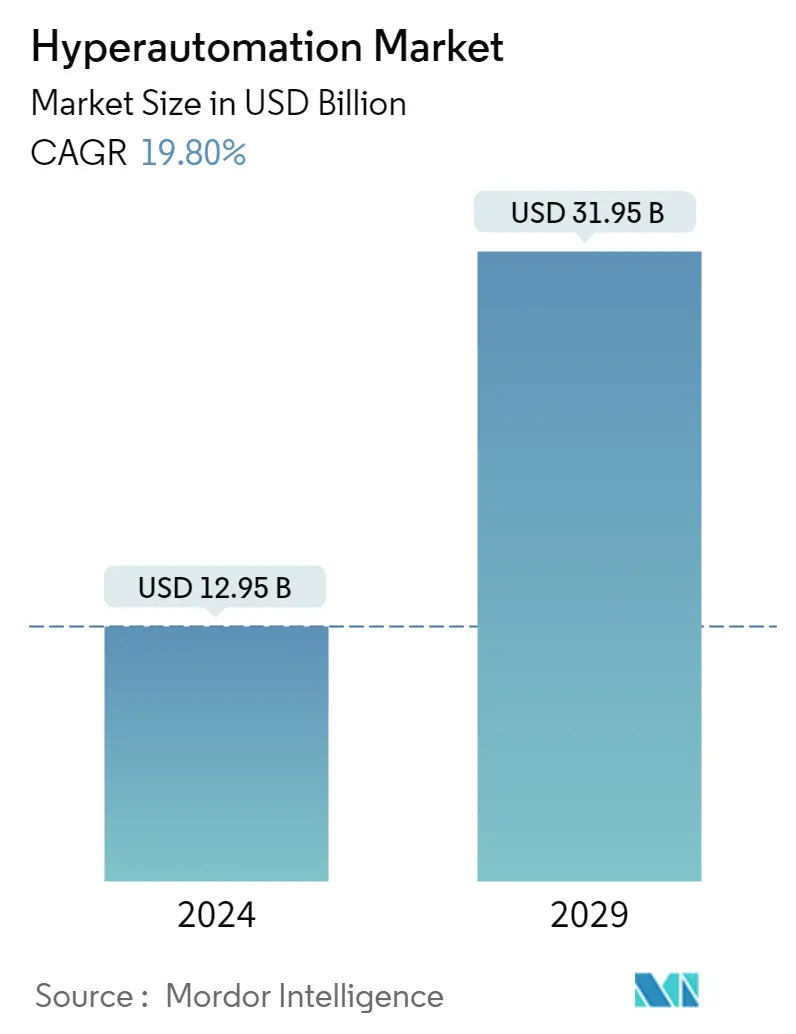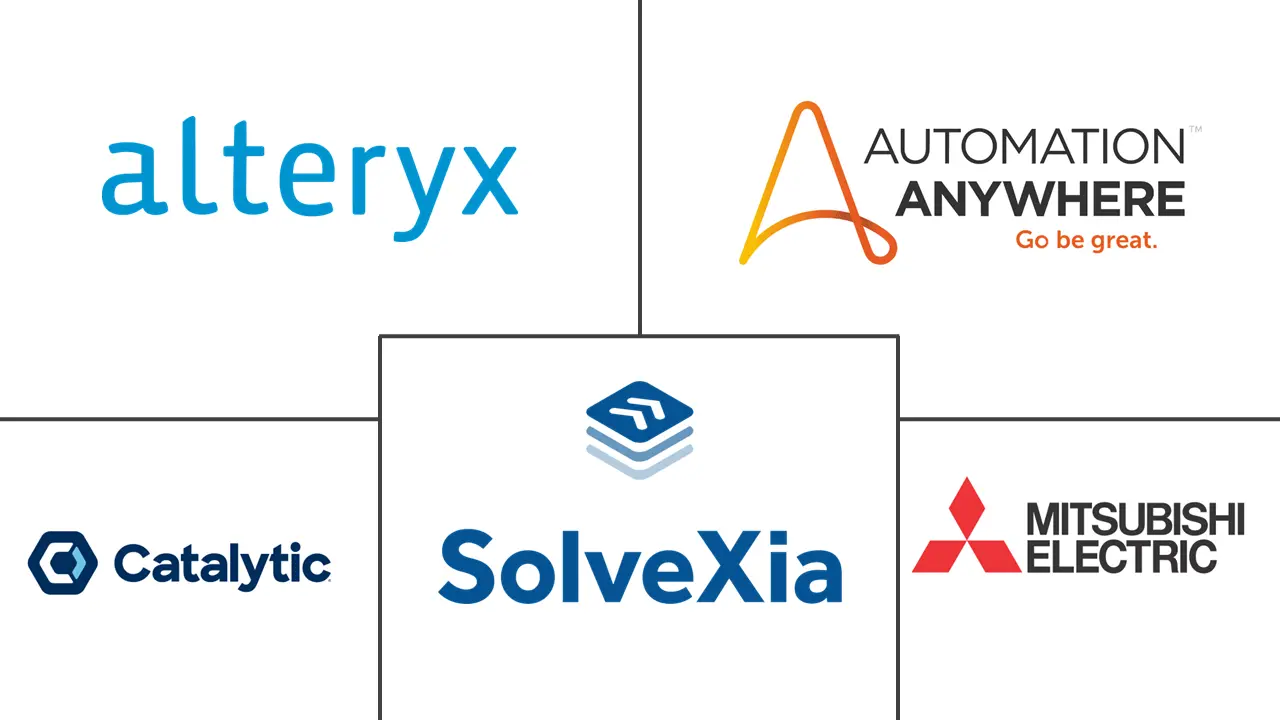Market Size of Hyperautomation Industry

| Study Period | 2019 - 2029 |
| Market Size (2024) | USD 12.95 Billion |
| Market Size (2029) | USD 31.95 Billion |
| CAGR (2024 - 2029) | 19.80 % |
| Fastest Growing Market | Asia-Pacific |
| Largest Market | North America |
Major Players
*Disclaimer: Major Players sorted in no particular order |
Need a report that reflects how COVID-19 has impacted this market and its growth?
Hyper Automation Market Analysis
The Hyperautomation Market size is estimated at USD 12.95 billion in 2024, and is expected to reach USD 31.95 billion by 2029, growing at a CAGR of 19.80% during the forecast period (2024-2029).
The key reason fueling the growth of the global hyperautomation market is the increase in digitalization worldwide. A digital process automation solution is most frequently used in firms that need effective back-end processing administration due to the rising demand for business automation. As a result, more enterprises are being founded, including BFSI businesses, industrial industries, and online retailers. The market is growing more due to companies adopting automation faster. An organization can significantly speed up operations while lowering errors by automating all of the repetitive manual tasks previously carried out by humans.
- The increasing implementation of automation in the manufacturing sector is expected to drive the hyperautomation market. Further, Cisco has predicted that by 2022, over half of the 28.5 billion connected devices on the planet will get connected via machine-to-machine (M2M) connections. The next generation of robotics and automation technologies represents a revolutionary opportunity for manufacturing to improve productivity, quality, safety, and cost metrics. It is something that manufacturers all over the world are aware of. Additionally, rising spending on robotic automation year over year is primarily broadening the study market's focus.
- Moreover, applications of RPA and AI have enabled the rise of security standards at the national and regional levels. Companies use hyperautomation to spot safety lapses and avert catastrophic mishaps. Many industrialized economies' defense industries are now exploring hyperautomation to modernize their security protocols and procedures. The industry that stands to gain the most from incorporating RPA and AI in its protocols is aerospace. Due to the rising trend in strategic alliances among market participants, there is more potential for increased worldwide market growth. It is common to see businesses partnering with other organizations to expand their global reach and assist the development of the worldwide market.
- Scaling automation through hyperautomation is rethinking patient care and improving health outcomes. Hyperautomation increases the value of human expertise and data by adding capabilities to existing operations. Through speech recognition and clever algorithms, voice biometrics technology analyzes patients' voices to verify their identities and compare them to the information they gave on their registration forms. It adds a layer of authentication to prevent patient impersonation during any contact.
- Furthermore, several applications were noted for voice biometrics during the pandemic. Research studies have explored the use of voice biometrics in detecting COVID-19-affected patients. For instance, in September 2021, research undertaken by artificial intelligence company Biometric Vox, in collaboration with the Cruces hospital and Domingo Pascual-Figal, head of Cardiology at Murcia's Virgen de la Arrixaca hospital, outlined the use of voice recognition to help in the detection of COVID-19 cases with 80% success rate.
- On the Flipside, since hyperautomation is relatively new, more institutions need to provide high-quality training in such advanced technology. The demand and the actual supply of skilled professionals need to be more balanced. Because it will take more time to train professionals before they can practically and effectively execute hyperautomation, this could significantly impact the growth of the global industry. For creating learning opportunities to develop qualified and skilled people in the hyperautomation industry, the global market needs additional investors in the educational sector.
